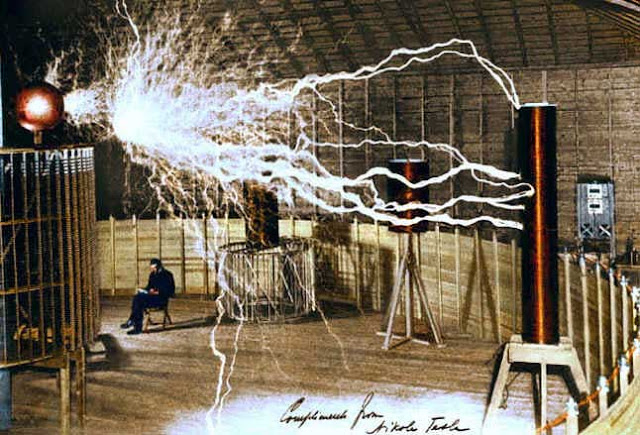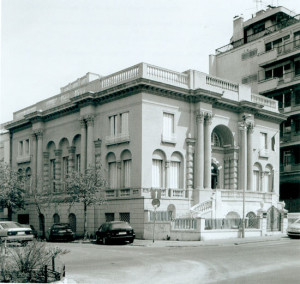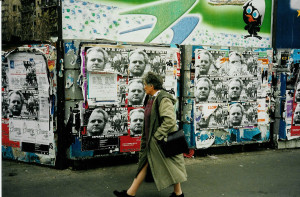Science Seen Physicist and Time One author Colin Gillespie helps you understand your world.
AC/DC and Tesla’s Ashes
 A question guitar-player Swarup Sinhato posted on Time One’s Facebook Page gets me thinking. He wonders why we hear so little about Tesla these days. I’m not sure. But Nikola Tesla seems to have a way of crossing my trail. (Of course it’s vice versa.) In my teens I was intrigued by Tesla. I built electrical transformers and my own Tesla coil. It generated about 4 million volts. Why that was safe is part of Tesla’s story and of the late-1800s AC/DC controversy.
A question guitar-player Swarup Sinhato posted on Time One’s Facebook Page gets me thinking. He wonders why we hear so little about Tesla these days. I’m not sure. But Nikola Tesla seems to have a way of crossing my trail. (Of course it’s vice versa.) In my teens I was intrigued by Tesla. I built electrical transformers and my own Tesla coil. It generated about 4 million volts. Why that was safe is part of Tesla’s story and of the late-1800s AC/DC controversy.
A Serbian (born near Zadar in today’s Croatia), Nikola Tesla was an inventor, some say the greatest ever. In the 1880s he immigrated to New York, worked for Thomas Edison, then set up shop in competition. The electrical revolution was underway.
Edison focused first on electric lighting for which direct current (DC) works just fine (check the lights on any car). For a while it looked like Edison and DC would win the race.
Tesla wanted to make electricity do work. This required lots of electrical energy transmitted over long distances. It required electric motors. Tesla saw these requirements called for alternating current (AC). He invented and patented a range of motors and transformers that became the seeds of today’s world-wide three-phase AC electrical system whose math I learned in physics classes. He sold his patents to George Westinghouse who built them into a huge industry. In large part Tesla’s work underpinned the new electrical economy. Edison was a great sprinter but Tesla won the marathon.
 So, twenty blog posts back, my wife and I are stuck behind a derailed train in Novi Sad. Next day we find the Tesla museum in Beograd. It’s in a grand old house, undamaged by the recent war but short on funds and staffed by volunteers. There are examples of his AC motors and electrical transformers and, to my delight, a demo of a big Tesla coil. In a secluded corner there’s a simple shrine that holds his ashes.
So, twenty blog posts back, my wife and I are stuck behind a derailed train in Novi Sad. Next day we find the Tesla museum in Beograd. It’s in a grand old house, undamaged by the recent war but short on funds and staffed by volunteers. There are examples of his AC motors and electrical transformers and, to my delight, a demo of a big Tesla coil. In a secluded corner there’s a simple shrine that holds his ashes.
In recent weeks the museum, just off Bulevar kralja Aleksander, is the epicentre of two new controversies. One is about Tesla Motors’ use of Tesla’s name, unauthorized but perfectly legal. Then a few days ago―with the kind of grand gesture that can end controversy―Tesla Motors’ co-founder, PayPal billionaire Elon Musk, gives a million dollars to the Tesla museum. No doubt they could use more but this should make a huge difference.
The other controversy comes from a political decision to move Tesla’s ashes some 500 meters south, to St. Sava Orthodox church, billed as the largest in the world. It’s an impressive edifice but when we step inside we see a dank and empty shell. Its floor is the remnants of a Nazi military parking lot. Many Serbian scientists oppose the move. I hesitate to weigh in on other people’s politics but, having seen both buildings, this move seems ill-conceived.
 In March our train limped into Beograd in the middle of a national election. The pro-European Serbian Progressive Party won a majority. To me this marked a true end to the Milošević era of savage nationalism. Days later a chance acquaintance on that brakeless bus told me that for the first time in many years the electorate voted for something. Since then Serbia and its new government have made peace with break-away Kosovo and endured widespread flooding. Tesla’s ashes may seem a small matter. But respectful views addressed to the Minister of Culture and Information, Ivan Tasovac, at kabinet@kultura.gov.rs and the Minister of Education and Science, Srƌan Verbić, at kabinet@mpn.gov.rs (almost all urls in Serbia use .rs; it’s an alphabet thing) might get their attention.
In March our train limped into Beograd in the middle of a national election. The pro-European Serbian Progressive Party won a majority. To me this marked a true end to the Milošević era of savage nationalism. Days later a chance acquaintance on that brakeless bus told me that for the first time in many years the electorate voted for something. Since then Serbia and its new government have made peace with break-away Kosovo and endured widespread flooding. Tesla’s ashes may seem a small matter. But respectful views addressed to the Minister of Culture and Information, Ivan Tasovac, at kabinet@kultura.gov.rs and the Minister of Education and Science, Srƌan Verbić, at kabinet@mpn.gov.rs (almost all urls in Serbia use .rs; it’s an alphabet thing) might get their attention.
Sources:
Matthew Sparkes (2014), “Elon Musk donates $1m for Nikola Tesla museum”, The Telegraph, London: Telegraph Media Group, July 11, http://www.telegraph.co.uk/technology/news/10961203/Elon-Musk-donates-1m-for-Nikola-Tesla-museum.html
Maddy French (2014), “Nikola Tesla’s ashes spark row between Serbian scientists and Orthodox church”, The Guardian, London: Guardian News and Media, March 4, http://www.theguardian.com/science/2014/mar/04/nikola-tesla-ashes-serbian-scientists-church-belgrade
Other Materials:
National Tourism Organisation of Serbia, “Cathedral of Saint Sava, Belgrade”, http://www.serbia.travel/culture/religious-buildings/orthodox-churches-xx-century/cathedral-of-saint-sava-belgrade/
Image Credits:
Nikola Tesla, http://humansarefree.com/2010/11/nikola-tesla-forgotten-wizard.html
Nikola Tesla Museum, http://www.teslasociety.com/teslamuseum.htm
Colin Gillespie (Beograd street, 2001)

No comments yet.